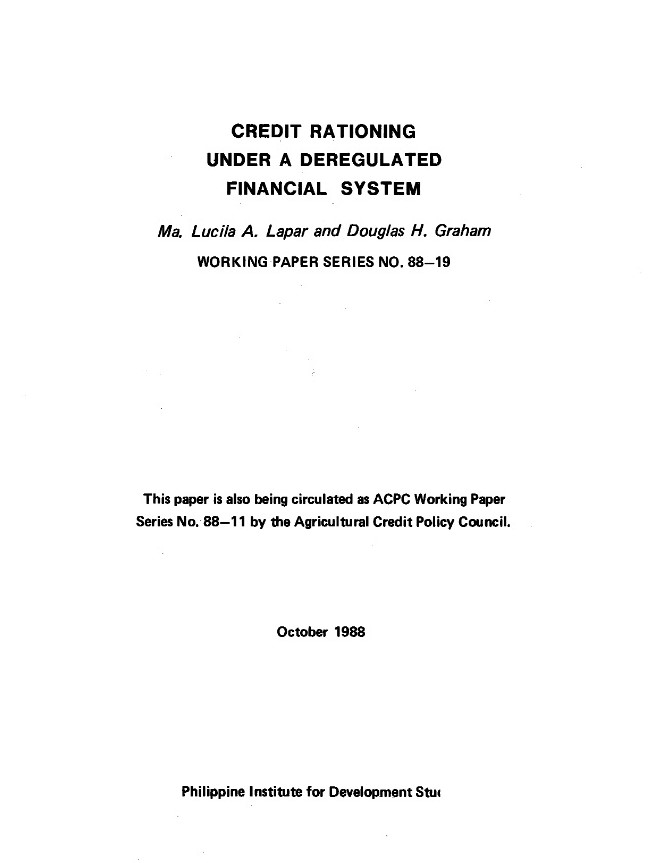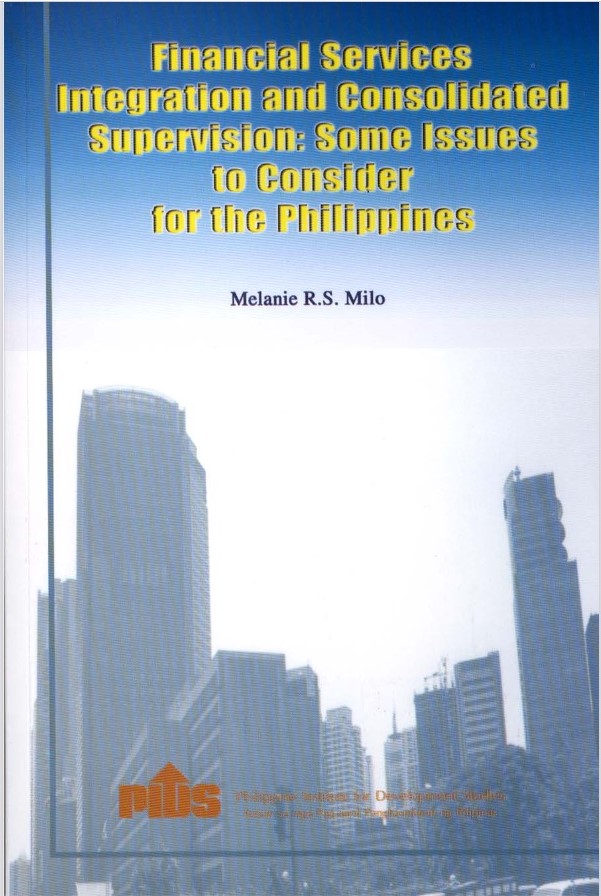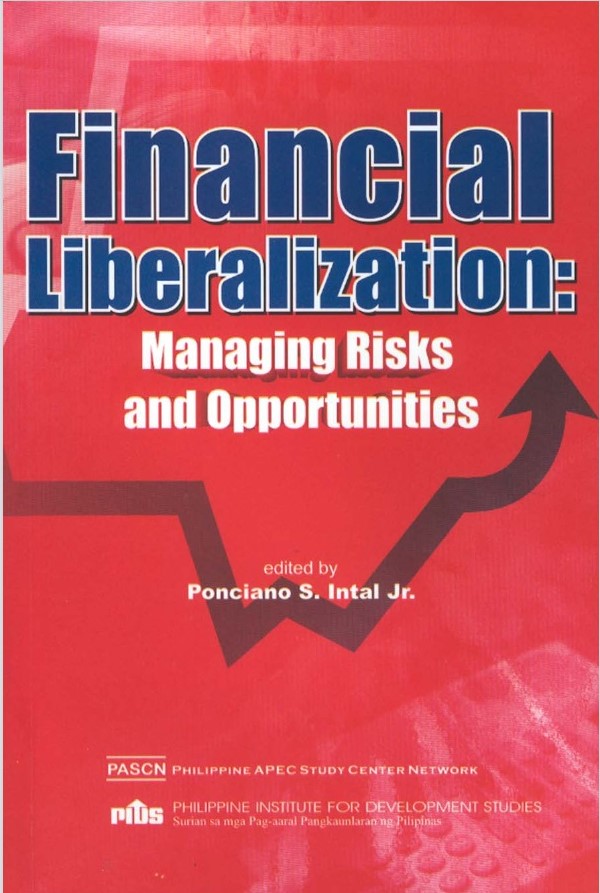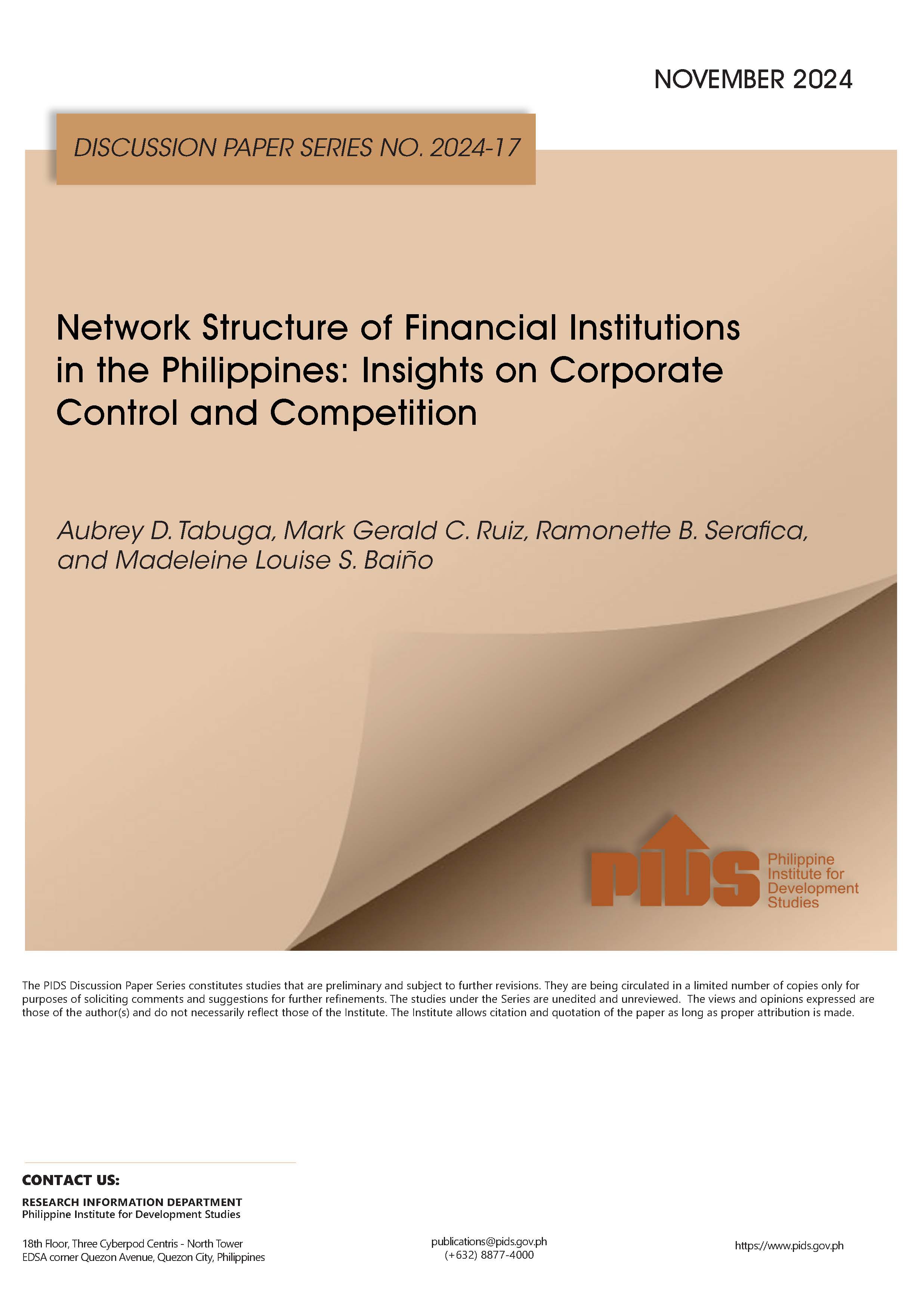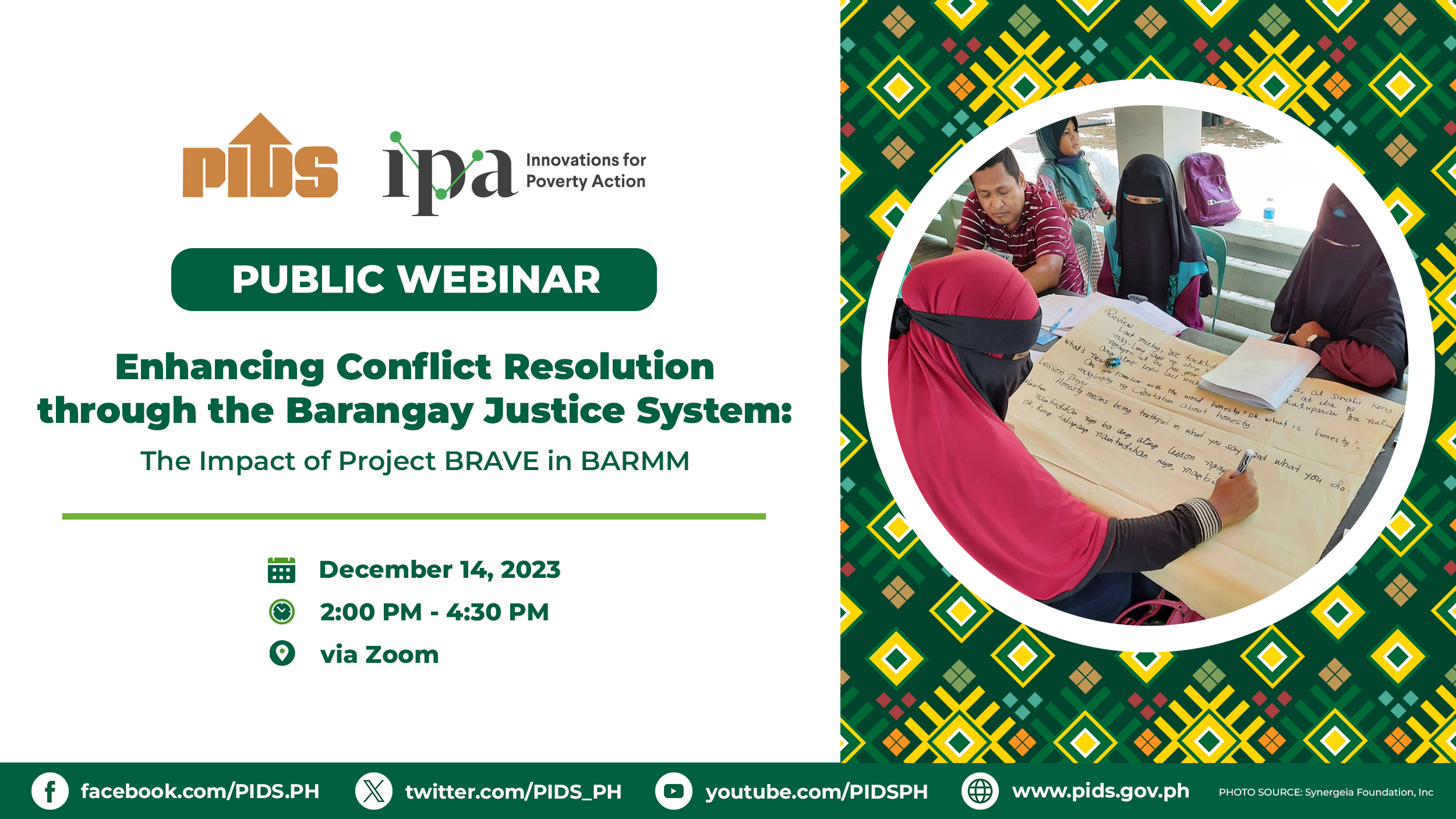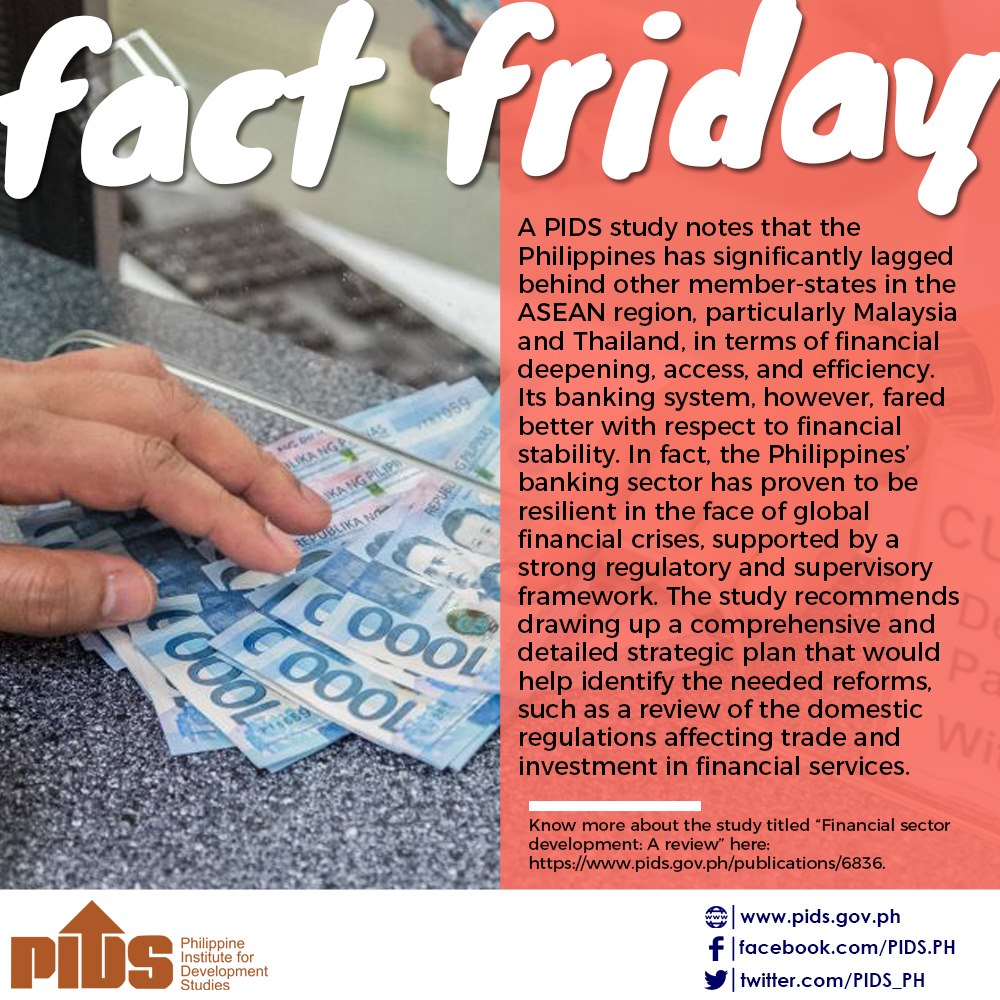The analysis of credit rationing in the context of the classical equilibrium model implies the existence of financial repression where interest rates are controlled. Given fixed interest rates at a level lower than the market clearing rates, borrowers are expected to demand more loans than lenders are willing to supply. Hence, the limited loan supply tends to discriminate against some borrowers. This paper examines the extent of credit rationing applied by rural financial institutions under a regime of financial liberalization. Specifically, the paper determines the signaling devices and screening mechanisms employed by different types of rural financial institutions.
Citations
This publication has been cited 1 time
- Kassegn, Andualem and Ebrahim Endris. 2022. Factors affecting loan repayment rate among smallholder farmers got loans from the Amhara Credit and Saving Institution: In the case of Habru District, Amhara Regional State, Ethiopia. International Area Studies Review, 25, no. 1, 73-96. Center for International Area Studies, Hankuk University of Foreign Studies.

